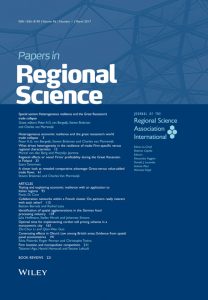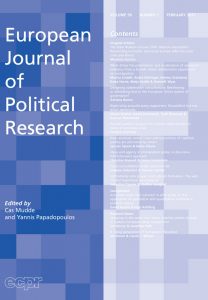Elections Have Consequences: What Happened in 2016 and What May Happen in 2020
by Jenny Enos, Rutgers University · Published · Updated
 Almost four years, a pandemic, countless protests, and an impeachment later, it seems that the election of Donald Trump in 2016 has had more severe and deadly consequences than many had imagined. While his election over Hillary Clinton was difficult to imagine in itself – for pollsters, political operatives, and the general public alike – and took the entire world by surprise, it was even harder to project what life in the U.S. would be like for the subsequent four years. Regardless of one’s political affiliation or opinions of the President, it is safe to say that the tumultuous, past four years have changed the cultural and social fabric of our society in significant ways.
Almost four years, a pandemic, countless protests, and an impeachment later, it seems that the election of Donald Trump in 2016 has had more severe and deadly consequences than many had imagined. While his election over Hillary Clinton was difficult to imagine in itself – for pollsters, political operatives, and the general public alike – and took the entire world by surprise, it was even harder to project what life in the U.S. would be like for the subsequent four years. Regardless of one’s political affiliation or opinions of the President, it is safe to say that the tumultuous, past four years have changed the cultural and social fabric of our society in significant ways.
What was it that made the election of Donald Trump take so many by surprise, and could it happen again? Given that polls now show Trump trailing Joe Biden by almost 10 points, the similarities to the months leading up to the 2016 election are striking. Many of the same issues that systematically plagued polling leading up to the 2016 election are well known to sociologists and other survey researchers; most notably, nonresponse bias and social desirability bias. According to Pew Research Center in their article “Why 2016 Election Polls Missed their Mark”, these issues stemmed mostly from the nonresponse bias yielded by some of Trump’s core base being harder to reach (due to rural locations, lack of access to phone or internet services) coupled with the social desirability bias of voters being reluctant to admit their true preferences when polled (Mercer et al. 2016). Hopefully, pollsters are hard at work figuring out how to more accurately predict election outcomes this time around.
However, there may also have been another factor at play in the “surprise” that was the 2016 election. Karen Cerulo, Professor of Sociology at Rutgers University – New Brunswick, argues that our inability to envision the worst is part of our culture. In her book Never Saw it Coming: Challenges to Envisioning the Worst (2006), Cerulo argues that while we are incredibly precise and imaginative in envisioning the “best case scenario”, we often struggle to clearly specify what the worst possible outcome could be in any given situation. Drawing on cognitive science, Cerulo shows that this is the result of the positive asymmetry of our brains – a cognitive structure whereby information is organized such that the most positive information is overemphasized, and worst-case examples are obscured. This positive asymmetry has become institutionalized in our culture, “making it the dominant mode by which groups and communities evaluate quality” (Cerulo 2006: 14).
In the minds of most people going into the 2016 election, was this “positive asymmetry” affecting our expectations of the outcome? Perhaps it had the strongest influence upon those who felt it unnecessary to vote, or those who voted for Donald Trump just to make a statement, since “Trump would never win anyway”.
Although it is interesting to speculate about this, there is much more to the story of the 2016 election than why polls were off, why people voted the way they did, and who won the election. As Sharon Cornelissen (2020) writes in her article “National Politics, Neighborly Politics: How Trump’s Election Impacted a Black and White Detroit Community” recently published in Sociological Forum, much more scholarly attention has been paid to the causes of right-wing populism than to the on-the-ground consequences of such politics. To fill this gap, Cornelissen’s article details how the national election of Trump shaped local experiences with racism in Brightmoor – a poor, majority-Black Detroit neighborhood that was has been struggling since the flight of auto-industry jobs and government-sponsored white suburbanization. Cornelissen shows that while White Trump-supporting Brightmoor residents carefully navigated Trump’s ethnonationalism by endorsing his anti-immigrant sentiment and ignoring or denying any anti-black racism, Black Brightmoor residents saw no distinction between his anti-immigrant politics and anti-Black politics. Significantly, the election of Trump had caused residents of Brightmoor to entirely re-envision the geography of their neighborhood, demonstrating how national politics had a deep and lasting impact on this local community.
Work such as Cornelissen’s shows that elections have consequences. Beyond attempting to predict what will happen on November 3rd, we need to prepare for a multitude of possibilities and establish systematic methods for addressing the unrest and tumult that will inevitably unfold in our communities, regardless of the outcome. Even if Donald Trump loses reelection, the past four years have shed new light on prevailing racism and inequalities in ways that will characterize our nation for years to come. The difficult conversations about racism, slavery, police brutality, white privilege, anti-immigrant sentiment, and economic inequality need to continue. None of these issues will automatically disappear as Trump leaves office, so the work can’t stop here. For now, we must challenge our “positive asymmetry” and try to envision the worst – and figure out how to effectively address it.
References:
Cerulo, Karen A. 2006. Never Saw it Coming: Cultural Challenges to Envisioning the Worst.
Chicago, IL: University of Chicago Press.
Cornelissen, Sharon. 2020. “National Politics, Neighborly Politics: How Trump’s Election
Impacted a Black and White Detroit Community.” Sociological Forum 35(2): 419-442.
FiveThirtyEight. “Latest Polls.”
<https://projects.fivethirtyeight.com/polls/president-general/national/>
Mercer, Andrew, Claudia Deane and Kyley McGeeney. 2016. “Why 2016 Election Polls Missed their Mark.” Pew Research Center. <https://www.pewresearch.org/fact-tank/2016/11/09/why-2016-election-polls-missed-their-mark/>






